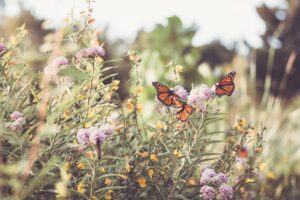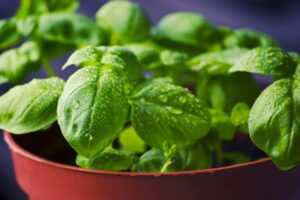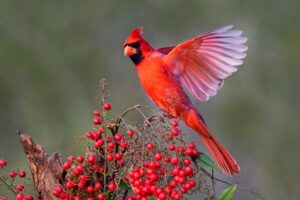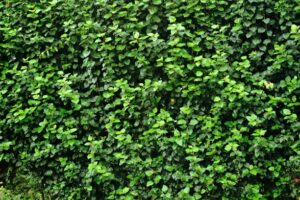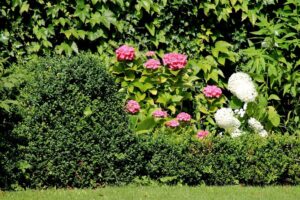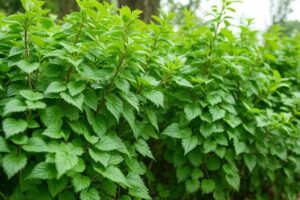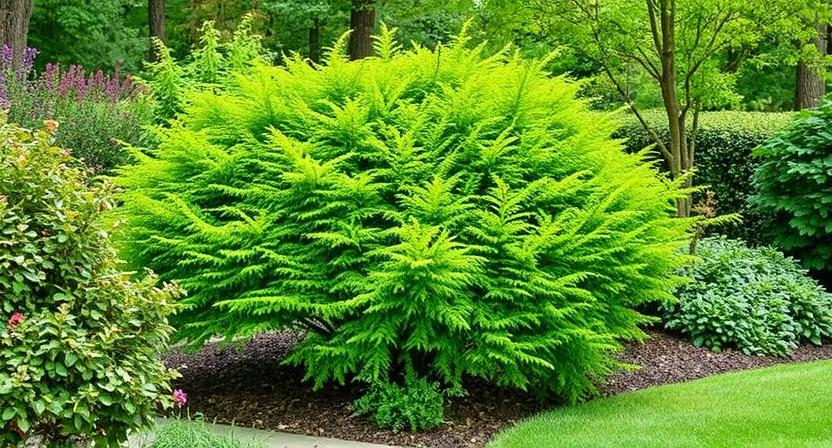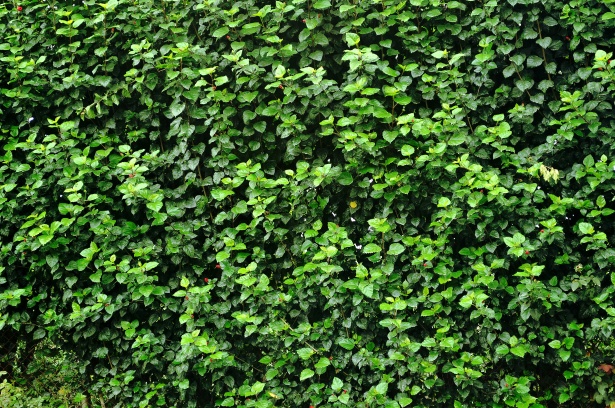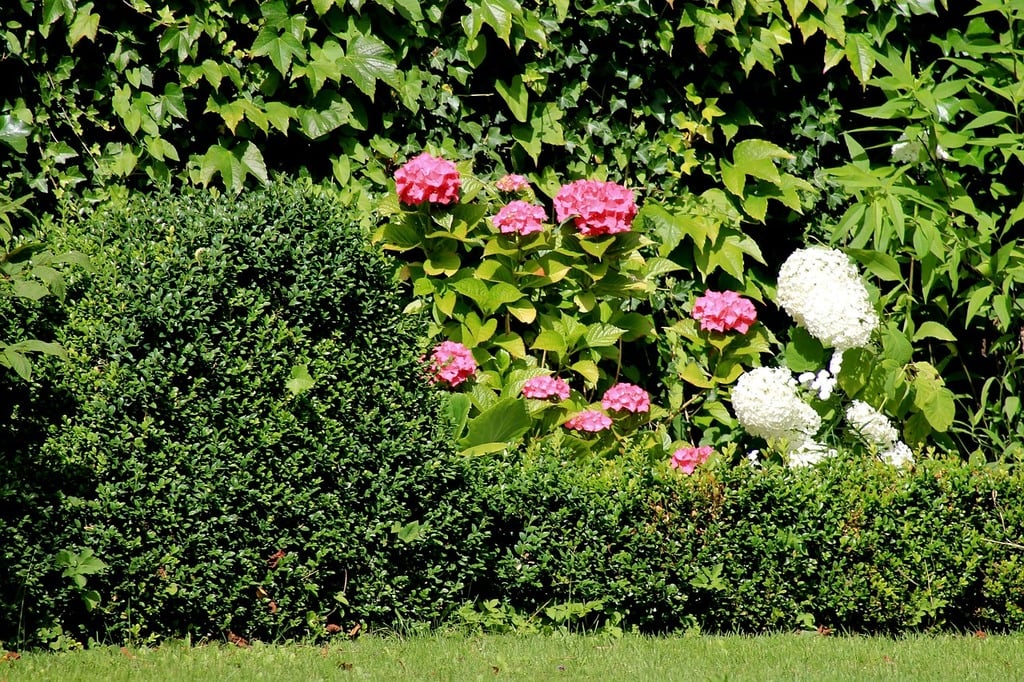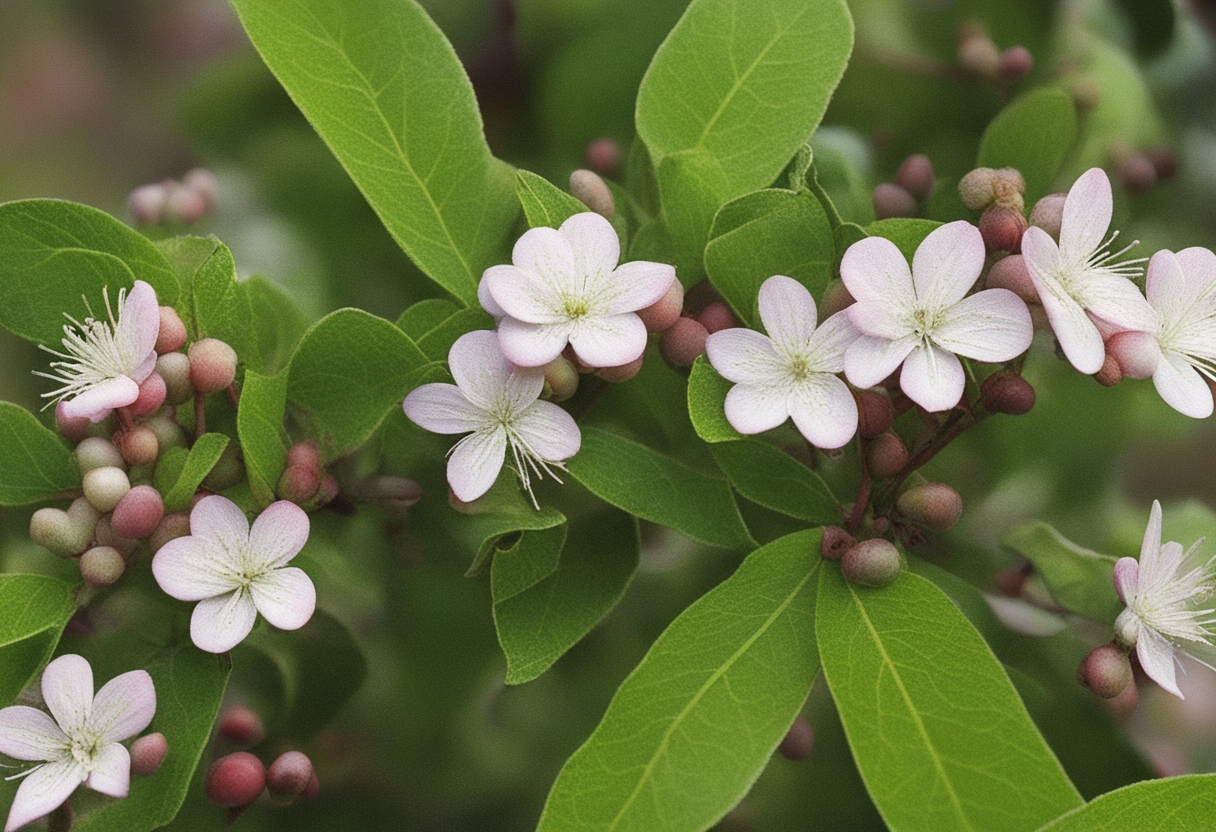Shrub Characteristics for Shade Gardens

Shrubs play an essential role in shade gardens, adding texture, structure, and visual interest to these often overlooked areas. When selecting shrubs for shade gardens, it is crucial to consider their specific characteristics. First and foremost, shade-tolerant shrubs possess the ability to thrive in low-light conditions, making them ideal for areas where direct sunlight is limited. These shrubs typically have larger leaves, which enable them to capture as much light as possible, even in the shade. Additionally, shade-loving shrubs are usually more flexible when it comes to soil moisture levels, as they can adapt to both dry and damp conditions.
Furthermore, when choosing shrubs for shade gardens, it is important to consider their ultimate size and growth habit. While some shrubs have a more compact and rounded shape, others may grow taller and wider, requiring ample space to develop fully. It is crucial to take into account the available area and plan accordingly, ensuring that the chosen shrubs will not overcrowd or overshadow other plants in the garden. Moreover, shrubs with interesting bark or attractive branching patterns can enhance the visual appeal of a shade garden, making them stand out even in the absence of vibrant flowers or foliage. By considering these characteristics, one can select the most suitable shrubs to create a beautiful and thriving shade garden.
• Shade-tolerant shrubs thrive in low-light conditions and have larger leaves to capture as much light as possible.
• Shade-loving shrubs can adapt to both dry and damp soil moisture levels.
• Consider the ultimate size and growth habit of shrubs when choosing for shade gardens.
• Some shrubs may require ample space to develop fully, while others have a more compact shape.
• Ensure that chosen shrubs will not overcrowd or overshadow other plants in the garden.
• Shrubs with interesting bark or attractive branching patterns can enhance visual appeal in a shade garden.
Native Shrubs for Shade Gardens
The use of native shrubs in shade gardens can greatly enhance the overall look and feel of the space. Not only are these shrubs well adapted to the local climate and soil conditions, but they also provide important habitat and food sources for native wildlife. One popular native shrub for shade gardens is the Virginia Sweetspire (Itea virginica). This deciduous shrub produces clusters of fragrant white flowers in spring and has attractive red and purple foliage in the fall. Another great option is the Eastern Redbud (Cercis canadensis), which boasts eye-catching pink flowers in early spring and heart-shaped leaves.
In addition to their aesthetic appeal, native shrubs play a crucial role in supporting the local ecosystem. They provide food, shelter, and nesting sites for birds, butterflies, and other pollinators. Some native shrubs, such as the Spicebush (Lindera benzoin), even serve as host plants for specific insects, contributing to the biodiversity of the area. By incorporating native shrubs into shade gardens, homeowners can create a sustainable and vibrant ecosystem while adding beauty to their outdoor spaces.
• Native shrubs in shade gardens enhance the overall look and feel of the space
• They are well adapted to local climate and soil conditions
• Provide important habitat and food sources for native wildlife
• Virginia Sweetspire (Itea virginica) is a popular native shrub for shade gardens
– Produces clusters of fragrant white flowers in spring
– Attractive red and purple foliage in the fall
• Eastern Redbud (Cercis canadensis) is another great option for shade gardens
– Eye-catching pink flowers in early spring
– Heart-shaped leaves
Native shrubs not only have aesthetic appeal but also play a crucial role in supporting the local ecosystem. They provide food, shelter, and nesting sites for birds, butterflies, and other pollinators. Some native shrubs even serve as host plants for specific insects, contributing to the biodiversity of the area. By incorporating these native shrubs into shade gardens, homeowners can create a sustainable and vibrant ecosystem while adding beauty to their outdoor spaces.
Some examples include:
– Spicebush (Lindera benzoin)
• Serves as a host plant for specific insects
• Contributes to biodiversity
– Other native shrubs suitable for shade gardens may vary depending on location
Evergreen Shrubs for Shade Gardens
Evergreen shrubs are a great addition to shade gardens as they offer year-round interest and provide a lush, green backdrop. These shrubs retain their leaves throughout the year, adding stability and structure to the garden. One popular evergreen shrub for shade gardens is the rhododendron. Known for their vibrant flowers and glossy foliage, rhododendrons thrive in partial shade conditions and bring a burst of color to the landscape. They come in a variety of sizes and colors, making it easier to find one that suits your specific aesthetic preferences.
Another evergreen shrub that thrives in shade gardens is the holly. With their glossy, spiky leaves and bright red berries, hollies not only add visual interest but also attract birds to the garden. Their dense growth habit also makes them great for creating privacy in shady areas. Additionally, hollies are low-maintenance shrubs that require little pruning or special care once established. If you’re looking for an evergreen shrub that can add structure, color, and wildlife appeal to your shade garden, holly is a fantastic choice.
These are just a couple of examples of evergreen shrubs that thrive in shade gardens. Keep in mind that it’s essential to consider your specific gardening conditions and the specific requirements of each shrub before making a selection. By incorporating a variety of evergreen shrubs into your shade garden, you can create a visually appealing and low-maintenance landscape that will be enjoyed throughout the year.
• Rhododendrons are popular evergreen shrubs for shade gardens, known for their vibrant flowers and glossy foliage.
• They thrive in partial shade conditions and come in a variety of sizes and colors.
• Hollies are another great choice for shade gardens, with their glossy leaves and bright red berries.
• They attract birds to the garden and provide privacy with their dense growth habit.
• Hollies are low-maintenance shrubs that require little pruning or special care once established.
• When selecting evergreen shrubs for your shade garden, consider your specific gardening conditions and the requirements of each shrub.
Flowering Shrubs for Shade Gardens

When it comes to creating a vibrant and colorful shade garden, choosing the right flowering shrubs is essential. These shrubs not only add beauty and visual interest to your garden, but they also attract pollinators like bees and butterflies. One excellent choice for shade gardens is the hydrangea. With its large, showy blooms in hues of pink, blue, and white, hydrangeas can brighten up any shady corner of your garden. Another popular flowering shrub for shade is the azalea. These lovely shrubs produce stunning clusters of flowers in shades of red, pink, purple, and white, providing a stunning burst of color to your garden.
• Hydrangeas: Large, showy blooms in pink, blue, and white
• Azaleas: Stunning clusters of flowers in red, pink, purple, and white
In addition to hydrangeas and azaleas, there are several other flowering shrubs that thrive in shade gardens. One such option is the rhododendron. These plants produce beautiful clusters of flowers in various shades of purple, pink, and white. Rhododendrons are known for their ability to tolerate shade well and can add a touch of elegance to any shady area.
Another great choice for a shade garden is the camellia. With its glossy evergreen leaves and stunning blossoms in shades of red, pink, or white, camellias can create a striking focal point in your garden. These shrubs prefer partial shade but can still bloom beautifully even with limited sunlight.
For those looking for something unique in their shade garden, consider adding a pieris japonica. This shrub features delicate cascading clusters of bell-shaped flowers that range from creamy white to deep rose-red. Pieris japonica also has attractive foliage that starts off bronze-colored before turning dark green as it matures.
Lastly, if you’re looking for a low-maintenance option for your shady garden spot, consider planting some dwarf fothergilla bushes. These compact shrubs produce fragrant bottlebrush-like spikes of cream-colored flowers in springtime. Additionally,the foliage turns vibrant shades of orange-red during the fall season—adding both color and interest to your shaded landscape.
When selecting flowering shrubs for your shade garden:
– Consider the specific lighting conditions each plant requires.
– Choose varieties that will complement each other’s colors.
– Pay attention to blooming times so you can have continuous color throughout the growing season.
– Take into account maintenance needs such as pruning or fertilizing requirements.
By carefully choosing the right combination of flowering shrubs, you can create a stunning and vibrant shade garden that will be the envy of all your neighbors. So don’t let a lack of sunlight limit your gardening options – embrace the beauty and possibilities that flowering shrubs offer for shady areas!
Low-Maintenance Shrubs for Shade Gardens
When it comes to creating a low-maintenance shade garden, choosing the right shrubs can make all the difference. These shrubs are well-suited to thrive in shady conditions while requiring minimal care and attention. One excellent option is the oakleaf hydrangea (Hydrangea quercifolia), known for its beautiful, cone-shaped white flowers which bloom in early summer and its striking oak-shaped leaves that turn a brilliant burgundy in the fall. This shrub is not only low maintenance but also deer-resistant, making it an ideal choice for those looking to add beauty to their shade garden without constant upkeep.
Another low-maintenance shrub for shade gardens is the Japanese aucuba (Aucuba japonica). This evergreen shrub boasts glossy, dark green leaves that remain vibrant even in the darkest corners of the garden. It produces inconspicuous, but unique flowers in the spring, followed by bright red berries in the fall, adding a pop of color to the shade garden. The Japanese aucuba is also drought-tolerant, making it a resilient choice for those looking for a hassle-free addition to their shade garden.
• Oakleaf hydrangea (Hydrangea quercifolia)
– Beautiful cone-shaped white flowers in early summer
– Striking oak-shaped leaves that turn burgundy in the fall
– Low maintenance and deer-resistant
• Japanese aucuba (Aucuba japonica)
– Evergreen shrub with glossy, dark green leaves
– Thrives in shady areas of the garden
– Produces unique flowers in spring and bright red berries in fall
– Drought-tolerant and low maintenance
Shrubs with Colorful Foliage for Shade Gardens
One of the key factors in creating visual interest in a shade garden is the use of shrubs with colorful foliage. These shrubs provide a vibrant and eye-catching display, even in areas with limited sunlight. Whether you are looking for bold, dramatic colors or soft, delicate hues, there are a variety of options to choose from.
One popular choice for adding color to a shade garden is the Japanese Maple (Acer palmatum). This stunning shrub is known for its delicate, lacy foliage that comes in a range of colors, including rich reds, fiery oranges, and vibrant purples. With its graceful growth habit and beautiful foliage, the Japanese Maple is sure to make a statement in any shade garden.
Another shrub that adds a burst of color to shade gardens is the Variegated Dogwood (Cornus alba ‘Elegantissima’). This deciduous shrub features stunning variegated leaves, with creamy white edges that contrast beautifully with the deep green centers. In the fall, the foliage transforms into shades of purple and red, adding a final burst of color to the garden. The Variegated Dogwood also produces clusters of small white flowers in the spring, adding even more visual interest.
• Japanese Maple (Acer palmatum): known for delicate, lacy foliage in rich reds, fiery oranges, and vibrant purples
• Variegated Dogwood (Cornus alba ‘Elegantissima’): features stunning variegated leaves with creamy white edges that contrast with deep green centers
– Foliage transforms into shades of purple and red in the fall
– Produces clusters of small white flowers in spring
Shrubs for Privacy in Shade Gardens

When it comes to creating privacy in shade gardens, selecting the right shrubs can make all the difference. These shrubs not only provide a sense of seclusion but also add beauty and texture to your outdoor space. One recommended option for privacy in shade gardens is the American holly (Ilex opaca). With its dense, evergreen foliage, this shrub forms a natural barrier that effectively blocks unwanted views. Another popular choice is the Eastern red cedar (Juniperus virginiana). Known for its attractive, aromatic foliage, this evergreen shrub can be planted closely together to create a thick screen of privacy.
• American holly (Ilex opaca) – dense, evergreen foliage forms a natural barrier
• Eastern red cedar (Juniperus virginiana) – attractive, aromatic foliage can create a thick screen of privacy
Shade-Tolerant Shrubs for Slopes in Gardens
Slopes in gardens can be challenging areas to plant, especially in shaded conditions. However, there are several shade-tolerant shrubs that are well-suited for these areas. One such shrub is the Japanese aucuba (Aucuba japonica). With its glossy, leathery leaves, this evergreen shrub adds a touch of elegance to any slope. It also offers clusters of red or black berries, providing visual interest throughout the year. Another shade-tolerant option is the mountain laurel (Kalmia latifolia). Known for its vibrant flowers in shades of pink, white, and red, this shrub creates a stunning display on slopes. Additionally, its evergreen foliage adds year-round beauty to the garden.
Shade-tolerant shrubs for slopes in gardens also include the Carolina rhododendron (Rhododendron carolinianum). This native American shrub boasts large, showy blooms in hues of lavender, pink, and white. Its mounding growth habit makes it ideal for stabilizing slopes while adding a burst of color. For a more low-maintenance option, consider the fragrant sweetbox (Sarcococca spp.). This compact evergreen shrub thrives in shade and has glossy, dark green leaves. It produces small white flowers in winter, releasing a delightful fragrance that fills the air. The sweetbox is a great choice for slopes, as its dense growth helps prevent erosion.
• Japanese aucuba (Aucuba japonica):
– Glossy, leathery leaves add elegance to slopes
– Clusters of red or black berries provide year-round visual interest
• Mountain laurel (Kalmia latifolia):
– Vibrant flowers in shades of pink, white, and red create a stunning display
– Evergreen foliage adds beauty to the garden all year long
• Carolina rhododendron (Rhododendron carolinianum):
– Large, showy blooms in lavender, pink, and white hues
– Mounding growth habit ideal for stabilizing slopes and adding color
• Fragrant sweetbox (Sarcococca spp.):
– Compact evergreen shrub with glossy dark green leaves
– Produces small white flowers in winter with a delightful fragrance
– Dense growth helps prevent erosion on slopes
Shrubs for Wildlife in Shade Gardens
Shrubs play a vital role in creating a wildlife-friendly environment in shade gardens. These plants provide shelter, food, and nesting sites for various animals, attracting a diverse range of wildlife. One such shrub is the native viburnum. With its dense foliage and clusters of berries, it offers a haven for birds, including migratory species. Additionally, viburnums attract butterflies and other pollinators with their fragrant flowers, thus promoting biodiversity in your shade garden.
Another shrub that supports wildlife in shade gardens is the spicebush. This native shrub thrives in shady conditions and offers multiple benefits to wildlife. Its aromatic leaves provide food for caterpillars of the spicebush swallowtail butterfly, while its modest flowers attract bees and other beneficial insects. Moreover, the ripe berries of the spicebush serve as a valuable food source for birds and small mammals, ensuring their survival during the colder months. Incorporating these shrubs into your shade garden will not only enhance its beauty but also create a welcoming habitat for a variety of wildlife species.
• Native viburnum: dense foliage and clusters of berries attract birds, including migratory species
• Viburnums also attract butterflies and other pollinators with their fragrant flowers
• Spicebush: thrives in shady conditions and provides multiple benefits to wildlife
• Aromatic leaves of spicebush are food for caterpillars of the spicebush swallowtail butterfly
• Modest flowers of spicebush attract bees and other beneficial insects
• Ripe berries of spicebush serve as a valuable food source for birds and small mammals during colder months
• Incorporating these shrubs into shade gardens enhances beauty while creating a welcoming habitat for various wildlife species.
Shrubs for Container Gardening in Shade

Shade gardens can present a challenge for container gardening, as the lack of direct sunlight can limit the plant options. However, there are still several shrubs that thrive in containers in shady areas. One such shrub is the Japanese Pieris (Pieris japonica), which offers an elegant display of pendulous flower clusters in shades of white or pink. With its compact growth habit, the Japanese Pieris is well-suited for container gardening in shady areas, adding a touch of beauty and interest to any space.
Another suitable shrub for container gardening in shade is the Dwarf Fothergilla (Fothergilla gardenii). This deciduous shrub produces fragrant white bottlebrush-like flowers in spring followed by colorful foliage in shades of orange, red, and purple during the fall season. Its compact size makes it a perfect choice for a container, allowing you to enjoy its stunning display up close. Adding the Dwarf Fothergilla to your shady container garden will not only provide visual interest but will also attract pollinators, contributing to a vibrant and thriving ecosystem within your garden.
• Japanese Pieris (Pieris japonica):
– Elegant display of pendulous flower clusters in shades of white or pink
– Compact growth habit, well-suited for container gardening in shady areas
– Adds beauty and interest to any space
• Dwarf Fothergilla (Fothergilla gardenii):
– Produces fragrant white bottlebrush-like flowers in spring
– Colorful foliage in shades of orange, red, and purple during fall season
– Compact size makes it a perfect choice for containers
– Attracts pollinators, contributing to a vibrant and thriving ecosystem within the garden


